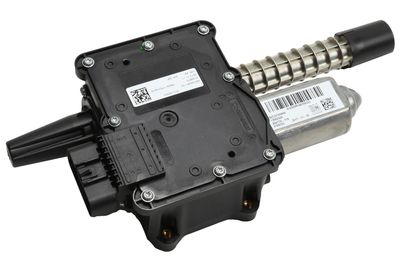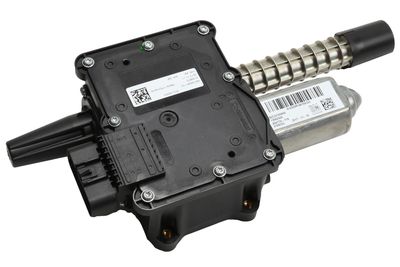Answer
Aug 28, 2024 - 04:02 PM
The 13582928 Parking Brake Electronic Control Unit (ECU), also known as the Electronic Parking Brake (EPB) Control Module, serves as the central component that manages and controls the operation of the electronic parking brake system in various General Motors (GM) vehicles. Its primary purpose is to ensure the safe, reliable, and efficient operation of the electronic parking brake, which replaces the traditional mechanical parking brake system.
Purpose of the 13582928 Parking Brake Electronic Control Unit:-
Automatic Activation and Release of the Parking Brake:
- The ECU controls the electronic parking brake's activation and release. When the driver engages or releases the parking brake using a switch (usually located on the dashboard or center console), the ECU receives this input and sends signals to the actuators or electric motors located in the rear brake calipers.
- Activation: The ECU commands the actuators to apply the brakes by engaging the brake pads against the rotors, thereby locking the rear wheels and preventing the vehicle from moving.
- Release: Upon receiving a release command, the ECU signals the actuators to retract the brake pads from the rotors, allowing the wheels to rotate freely.
-
Ensuring Safe and Secure Parking:
- The primary function of the ECU is to maintain vehicle stability when parked, especially on inclines or uneven surfaces. The ECU ensures that the parking brake is properly engaged to prevent the vehicle from rolling.
- It also helps in maintaining a secure hold by automatically adjusting the braking force based on the vehicle's weight and slope of the parking surface.
-
Integration with Other Vehicle Systems:
- The ECU integrates with other safety systems in the vehicle, such as the Anti-lock Braking System (ABS), Electronic Stability Control (ESC), and the main Engine Control Module (ECM).
- This integration allows the ECU to enhance vehicle safety. For example, during emergency braking or loss of traction, the ECU can coordinate with ABS and ESC systems to provide additional braking support.
-
Facilitating Emergency Braking:
- The ECU supports an emergency braking function in some GM vehicles. If the driver pulls or holds the parking brake switch while the vehicle is in motion, the ECU can gradually apply the brakes to slow down or stop the vehicle safely in an emergency.
-
Monitoring and Diagnostics:
- The ECU continuously monitors the status and condition of the electronic parking brake system, including the position of the brake pads, the condition of the actuators, and the force applied by the brake.
- It has diagnostic capabilities to detect faults or malfunctions within the EPB system. If a problem is detected, such as a malfunctioning actuator or sensor, the ECU stores diagnostic trouble codes (DTCs) that can be retrieved using a diagnostic tool for troubleshooting and repairs.
-
Supporting Automatic Features:
- The ECU supports advanced features like "Auto Hold," which automatically engages the parking brake when the vehicle comes to a complete stop (e.g., at traffic lights). The brake is held until the driver accelerates, reducing driver fatigue and preventing vehicle roll.
- The ECU releases the parking brake automatically when the driver presses the accelerator pedal, allowing for a seamless driving experience.
-
Preventing Unauthorized Movement:
- By controlling the electronic parking brake, the ECU helps prevent unauthorized or unintended vehicle movement when parked. This is particularly important for safety, especially when parking on slopes or in crowded areas.
-
Enhancing Driver Convenience and Safety:
- The ECU automates the parking brake function, eliminating the need for a mechanical handbrake lever or foot pedal. This not only provides more cabin space and design flexibility but also reduces the effort required by the driver to engage and release the parking brake.
-
Adapting to Vehicle Conditions and Use Cases:
- The ECU can adjust the braking force based on various conditions, such as vehicle load, incline, and the driver's braking habits. This adaptability helps optimize braking performance and reduce wear on the braking system components.
- Improved Safety: By automating the parking brake function and integrating it with other safety systems, the ECU helps enhance vehicle safety and control in various driving conditions.
- Enhanced Convenience: The electronic control of the parking brake simplifies the driver’s tasks and allows for additional features like "Auto Hold" and emergency braking assistance.
- Reliable Performance: The ECU ensures consistent and reliable operation of the electronic parking brake, reducing the risk of failure and improving overall vehicle stability.
- Diagnostic Capabilities: Built-in diagnostics help quickly identify and resolve issues with the electronic parking brake system, maintaining its functionality and safety.
- Warning Lights or Error Codes: If the parking brake warning light illuminates or if there are error messages related to the EPB system on the dashboard, this could indicate an issue with the ECU.
- Failure to Engage or Release: If the electronic parking brake does not engage or release properly, or there is a delay in its operation, this may suggest a malfunction in the ECU.
- Unusual Noises or Behavior: Unusual noises when engaging or releasing the parking brake, or lack of response to the switch input, could indicate a problem with the ECU.
The 13582928 Parking Brake Electronic Control Unit plays a critical role in managing the electronic parking brake system in GM vehicles. Its primary purpose is to ensure the safe, reliable, and efficient operation of the parking brake, enhancing both safety and convenience for the driver. Proper maintenance and timely service of the ECU are essential to ensure the electronic parking brake system operates correctly and safely.





Add New Comment